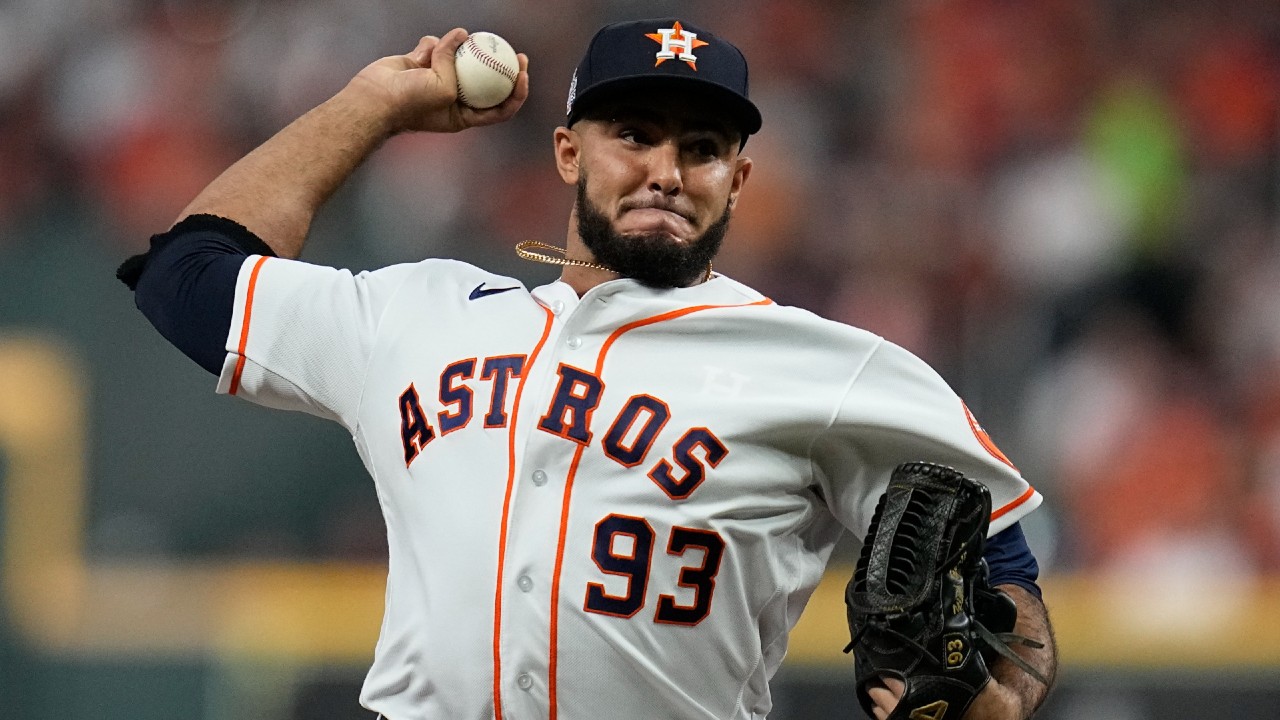
One of the micro reasons the 2021 Toronto Blue Jays fell a win short of the playoffs — shrouded by the more glaring macro ones — was the loss of David Phelps in early May.
Up until he went down to a season-ending lat injury, Phelps was providing a steady bridge to the back end of Toronto’s bullpen, pitching to a 0.87 ERA while often protecting slim, seventh-inning leads. But when Phelps got hurt, the Blue Jays began surrendering those leads before they could ever get to the capable hands of Tim Mayza and Jordan Romano, a problem that persisted until the club made its too-late acquisitions of Trevor Richards and Adam Cimber.
With Richards and Cimber both returning next season — and Phelps attempting a comeback in spring training on a minor-league deal — the Blue Jays can feel better about their insulation against a similar issue. But you can never have enough capable relief arms kicking around, can you?
Enter Yimi Garcia, the 31-year-old right-hander the Blue Jays signed to a two-year, $11-million free agent contract prior to MLB locking out its players on December 2. Since making his debut with the Los Angeles Dodgers in 2014, Garcia’s been a dependable-if-unspectacular late-game option, pitching to a 3.60 ERA over 241 appearances with respectable strikeout (26 per cent) and walk (5.6 per cent) rates. He’s no Ryan Pressly or Liam Hendriks. But he’s perfectly serviceable.
Garcia spent part of this season closing for a very bad Miami Marlins team, recording 15 saves in 18 opportunities, before being traded to a very good Houston Astros team and going on to make 10 postseason appearances, including four in the World Series. Only once in his seven MLB campaigns has Garcia posted an ERA+ below 100 (a challenging 2018 spent battling forearm inflammation following Tommy John surgery) and he boasts sneakily solid expected stats for his career (.218 xBA; .289 xwOBA) thanks to a penchant for suppressing hard contact.
Of course, considering the extreme amount of luck and volatility baked in to relief results, scouting the stat line of a guy like Garcia isn’t particularly useful. Relievers, throwing somewhere around 60-70 innings in a best-case scenario season, are the small sample of small samples. Remove just one bad night from a reliever’s game logs and the overall picture can change dramatically.
For Garcia, this year’s one bad night came September 24 against the Oakland A’s. Working with a fastball and slider that were both coming out of his hand around 1.5-m.p.h. slower than his season averages, Garcia began his outing with consecutive flare singles carrying exit velocities lower than 74-m.p.h., a weak fly out, and a preposterous, 11-minute, 13-pitch battle with Josh Harrison that featured 9 foul balls, three pick-off attempts, and three injury delays — Harrison fouled balls off his knee, shin, and catcher Martin Maldonado’s bare hand — before resulting in a walk to load the bases.

Garcia’s very next pitch — a 95-m.p.h. sinker a half-foot in and off the plate to Starling Marte — was shot just inches fair over third base, nearly knee-capping an umpire on its way to rattling around in the left field corner for a two-run double. And so ended Garcia’s night. But not his line, as the two runners he left on base later scored on a grand slam.
Pretty tough result, all in all. Four earned runs allowed — a career-high — thanks to a couple perfectly-placed, soft-contact hits off diminished stuff (Garcia was pitching for a sixth time in 12 days) and one of the more insane plate appearances made anywhere across MLB all season. Strip that hard-luck outing from Garcia’s 2021 and suddenly he’s boasting a 3.61 ERA over 57.1 innings as opposed to the 4.21 over 57.2 he ended up with. It’s all relative.
That’s why clubs seek quality of stuff when acquiring relievers, damn the results. And why they sift through prior utilization of that stuff on the hunt for upside and untapped potential. Things like good fastballs that could be located more consistently. Secondary weapons that could play better in different parts of the zone. Tweaks in mechanics, sequencing, approach, and even mindset that could unlock a higher level of performance.
With Garcia, the stuff part is obvious. The average spin rate on his fastball has been within MLB’s 95th percentile or higher each of the last four seasons. That causes the pitch to drop less than the league-average fastball, creating an optical illusion in which it appears to be rising. Combine that gravity-fighting effect with plenty of giddy-up behind it — Garcia’s heater averaged 96-m.p.h. this season, touching 99 — and you’ve got the raw materials for a very effective primary weapon:
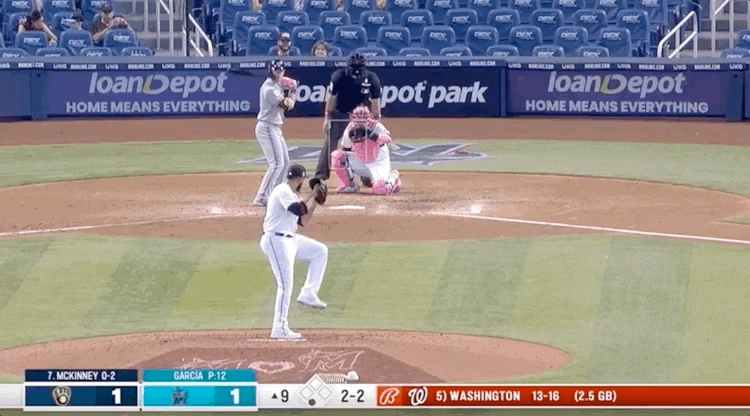
He spins the hell out of his curveball, too — a 2,700+ RPM pitch that ranked within MLB’s 83rd percentile this season. Curiously, Garcia hasn’t used it as much as his slider over the last two years. But in 2019, when he was going to it over 30 per cent of the time, Garcia held hitters to a .250 xwOBA against the pitch. Not elite, but certainly useful:

Garcia’s slider doesn’t create quite as much movement as his curveball (although it’s still a 73rd percentile spin rate pitch) but that might be because he throws it in the low-90’s. Only six pitchers averaged a higher velocity on their sliders than Garcia in 2021. It gets to the plate so quickly it doesn’t have much time to move:
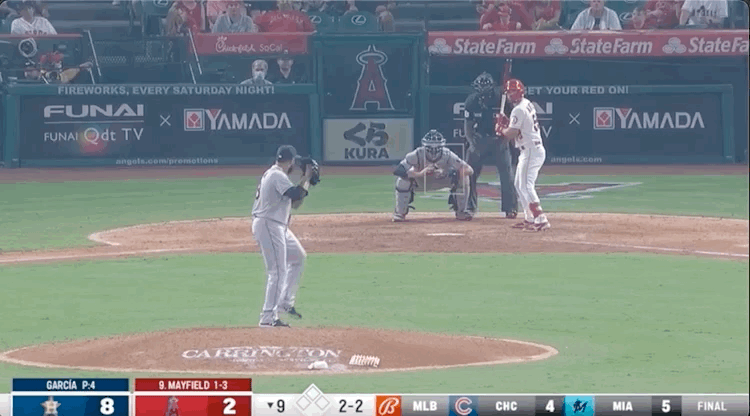
Even Garcia’s changeup — a pitch he used only 6.4 per cent of the time in 2021 — has some interesting characteristics, with above-average movement both vertically and horizontally. While the average MLB changeup breaks about 15.5 inches, Garcia’s breaks 17.7. When he’s locating it, Garcia can run the pitch right off left-handed bats:
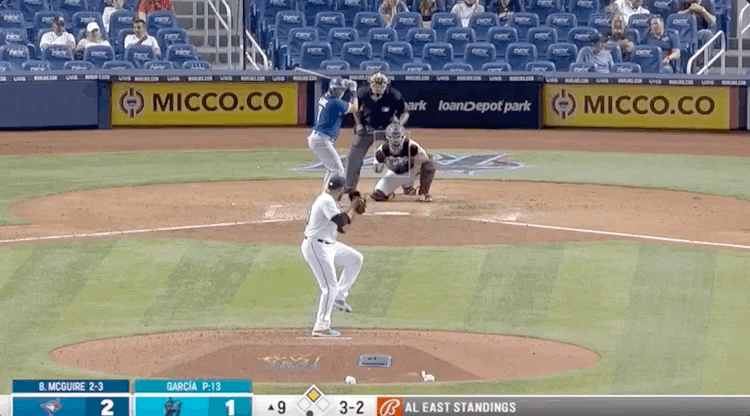
So, that’s a fastball that stays up, a curveball that drops down, a slider that cuts left, and a changeup that runs right. It stands to reason that with building blocks like these, and control that’s allowed him to post an 87th percentile walk rate among relievers since 2018, a smart team ought to be able to mould Garcia into a dangerous late-game weapon. But then what does it say that a smart team like the Dodgers non-tendered him following a 2019 season in which he posted a 3.61 ERA (and 2.94 xERA) with strong strikeout and walk rates over 62.1 innings?
It probably says something. Projected to earn only $1.1-million through arbitration in his age-29 season, Garcia had health, affordability, and an expected stat profile that suggested he was capable of much better results if he could continue generating soft contact and keep a few more balls in the yard. For a cunning Dodgers front office to not see the value in that is certainly curious.
But there are a couple other ways to look at it. Maybe Los Angeles, a juggernaut organization that’s appeared in nine consecutive postseasons, is just so talent-loaded that good-but-not-great players like Garcia become expendable for the sake of opening a roster spot. Maybe Garcia being out of minor-league options broke a tie between him and other, more fungible bullpen candidates. Maybe the Dodgers simply ran out of runway to give him to reach his potential, prioritizing another arm’s certainty over Garcia’s possibility.
It’s hard to say. What we do know is that while Garcia’s always demonstrated strong control of his pitches, the command’s been another issue. The problem isn’t that he misses outside the zone — he misses in it.
Since 2018, 8.3 per cent of the pitches Garcia’s thrown have ended up in what StatCast refers to as “Gameday Zone 5.” An MLB broadcaster might refer to it as “middle-middle.” You might refer to it as a meatball — right down the heart of the plate. Of the 596 relievers to throw at least 1,000 MLB pitches over that span, Garcia’s percentage of Gameday Zone 5 offerings ranks No. 44. That’s a 92nd percentile mark. Anyone would refer to it as a lot.
It’s reflected in Garcia’s home run rate — an inauspicious 1.72 per nine innings since 2018. That’s the 10th highest HR/9 of the 204 MLB relievers to pitch at least 100 innings over that span. From a pitcher being called upon to protect slim leads late in games, it’s not what you want.
This may shock you, but it turns out MLB hitters thrive on middle-middle, as 10 of the 30 homers Garcia’s surrendered since 2018 have come off Gameday Zone 5 pitches. And another eight came off pitches in Gameday Zones 2 and 8, which are right above and below Zone 5 on the centre of the plate. It really doesn’t matter how many revolutions per minute your 96-m.p.h. fastball spins — you can’t leave it here to Nolan Arenado in a full count:
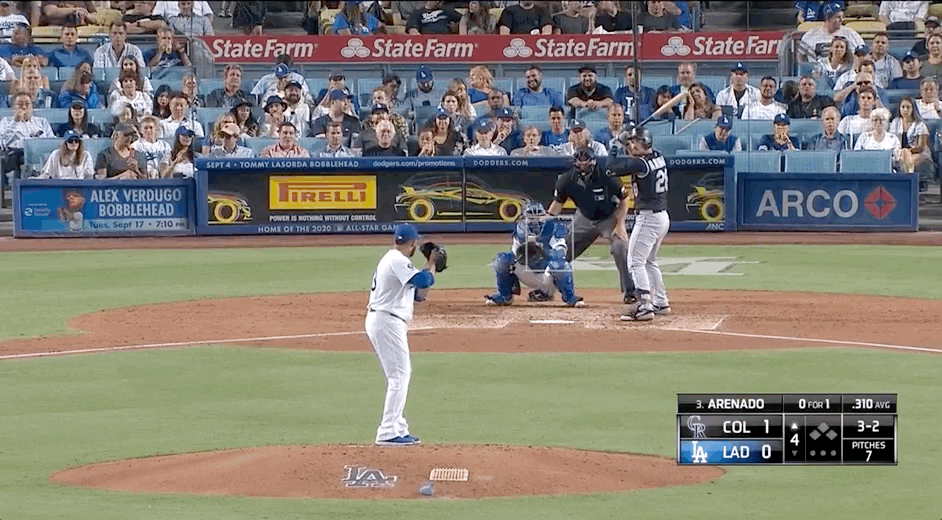
What Garcia needs to do to keep his pitches off the heart of the plate and more towards the edges — a mechanical adjustment, tinkering with grips, moving on the mound, setting different sights — is a question for Pete Walker, Matt Buschmann, and the rest of the Blue Jays pitching department. But one would presume there’s something he could tweak to better command his intriguing stuff in the zone. It’s not like Toronto’s front office is in the business of handing out two-year guarantees to relievers they don’t believe they can help.
At the very least, the Blue Jays have further insulated their bullpen against the injury attrition that led directly to losses after Phelps went down this season. They’ve added another capable late-game option — a veteran with experience closing games and pitching in the postseason. And if they can help Garcia unlock the upside he’s carried throughout his career, they might come away with something even better.
Why Garcia has potential to be a dangerous late-game weapon for Blue Jays
Source: Pinas Ko Mahal

0 Mga Komento